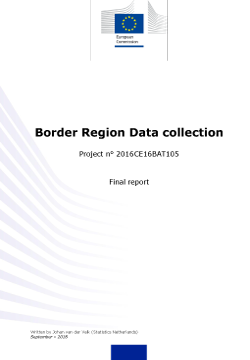
Studies
Date: 30 sep 2018
Period: 2014-2020
Theme: Cooperation between regions and countries, Territorial cohesion
Languages: en
Following the European Commission's communication ‘Boosting growth and cohesion in EU border regions’, the DG for Regional and Urban Policy launched a pilot project to test new ways of collecting data for cross-border cooperation areas. Eight statistical institutes participated in this project led by Statistics Netherlands.
The report presents the findings of the project, which focused on labour market indicators. Three types of data have been reviewed: the labour force survey (LFS) data, data extracted from national administrative sources and mobile phone data.
Using the Labour Force Survey, it is not feasible to produce all indicators for individual NUTS3 border regions, but these can be produced for groups of NUTS-3 border regions. In addition, combing labour force survey with other datasets and small-area estimations could help to improve the availability of data for individual NUTS-3 regions.
National administrative sources are shown to be quite successful sources of information. They can quantify and characterise cross-border workers and foreign citizens living in border regions. The test case revealed the significant potential of administrative sources to capture cross-border employment.
Finally, mobile phone data can be used to measure and characterise people moving across the border. These first results are very promising, but data access remains problematic and further methodology development is needed.
